6 Tips, Tricks, and Hacks for Shooting Sharper Manual Focus Photos
![]()
This article aims to provide you with key tips, techniques, and hacks that, if followed correctly, should practically guarantee nailing pin-sharp manual focus shots in no time.
Ever since Leica presented a camera at the 1976 Photokina with working automated focusing, autofocus technology has improved by leaps and bounds. Today’s autofocus systems are nothing short of miraculous—so good it’s hard to imagine where the advancement can go from here.
But photographers didn’t alway have focusing this easy
Autofocus History
Although autofocus seems like a given staple of our photographic lives now, it’s only really seen consistent success beyond a gimmick since the mid 80’s and early 90’s.
Konica brought out the first mass-produced autofocus SLR in the form of the C35 AF to market in 1977, but it wasn’t until 1992, when Nikon properly integrated motors into the lens itself, that autofocus became not only quick but somewhat reliable.

Why bother with manual focus lenses?
Photography and focusable lenses have been around since the early 1800’s, and considering that autofocus didn’t come into play until the 1980’s, that’s a whole lot of lenses that were never autofocus compatible and a whole lot of manual focus lenses that can still create some gorgeous shots.
But it’s not just the older ‘vintage’ lenses that are manual focus; there are new manual focus lenses being released all the time known as ‘art’ lenses.
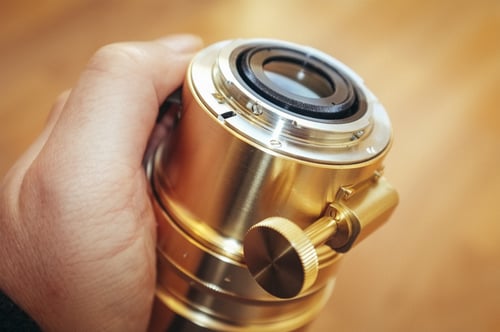
These are the lenses being created by companies like Lensbaby and Lomography that create a specific look that cannot be recreated with a modern autofocus lens. Learning to manual focus these modern lenses is exactly the same as learning to focus the vintage ones—once you learn it, you’re set to explore literarily thousands of manual focus lenses from all around the world.
Also, let’s not forget that we’re in the minority here. Those of us that are prepared to work a little harder for an awesome looking shot will be rewarded. That reward comes in the form of thousands of old manual focus lenses that are crazy cheap—I’ve picked up some absolute killer lenses for as little as £30 to £50, which is fantastic.
But are manual focus lenses really still viable? Is the hassle of using a manual focus lens really worth the effort? It’s my opinion that it most definitely is worth the effort because, with a little practice and patience, we can open up a whole new world of lenses that really do create some fantastic and unique looking shots.

I’ve been manually focussing lenses for a very long time, so I’m a little more used to them than some people. In fact, my first camera that was my fathers old Olympus OM-1, and that only had manual focus lenses. To focus properly on that camera, you had to peer through the viewfinder and line up the two adjacent semicircles. When they aligned, you knew your shot was in focus.
The point I’m making here is that manual focusing to any degree of consistency is a skill like any other: it takes practice and you need to train your eye to know what to look for. So if you’ve ever given manual focusing a go or if you’re about to give it a go, don’t be disheartened straightaway, stick with it and I promise it will get easier.
Some tips on making manual focusing easier
Below I will go over the three key tips that I think you need to bear in mind to ensure you the best possible number of pin-sharp images.
1. Ambient Light
First and foremost is lighting. I’ll be honest, manual focusing outside in the middle of the day with plenty of bright lighting and a ton of detail to focus on is relatively easy. I highly doubt that many of you are here because you’re struggling to focus outside. But I shoot 99% of my work in a room with no windows, so believe me when I say that if you can manual focus inside in a studio with limited ambient light, you can manual focus almost anywhere.

Unfortunately, lighting is also the biggest problem. Everything I shoot is with flash, so although the final shot looks bright once the flash has fired, focusing in the dim light of a tungsten modeling bulb certainly isn’t. So, first and foremost, turn as much ambient light on in the studio as you can stand.
You don’t have to set your shot up with all the lights on if you don’t want to, you can just have the modeling bulbs on to place your lights, but once you’re happy, turn all the studio lights on to focus.
If you’re unsure if all that lighting is going to affect your shot then turn the flash triggers off and fire a shot in the ambient light to see if anything registers on the camera. It’s highly unlikely that anything will show up, even with all the lighting on in the room, because we’re often shooting flash at 100 ISO with shutter speed in excess of 1/160.
You’d be surprised how much ambient light you need to register on the sensor with settings like that.
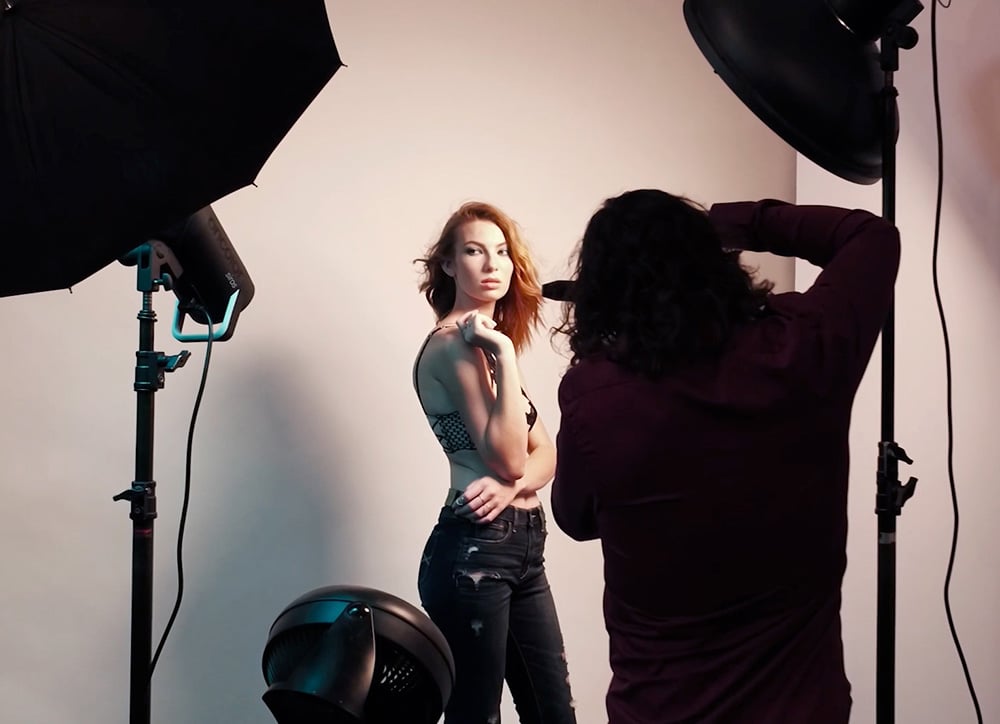
2. Catchlights
I am going to assume for this section that you’re trying to get your subject’s eyes in focus as a priority. If, for some bizarre reason, pin-sharp eyes aren’t your thing then you can by all means skip this step.
As anybody who has been to my workshops will tell you, I preach/teach until the end of time about getting clean and clear catchlights in the subjects eyes, and this is never more important than when you’re trying to manually focus on a models eyes.
Catchlights are the spectral sparkle of the lighting in the subjects eyes (check this diagram for more information). If you don’t have catchlights in the models eyes then it becomes very hard for us to tell when the shot is in or out of focus because there’s simply not enough contrasting data or detail for us to differentiate between in-focus and soft-focus.

Catchlights are not always about light placement though, and it can simply be that the model has moved in such a way that you are no longer seeing the tell-tale sparkle. Of course, it could also be you: you may have moved to get a better angle so now the catchlights have disappeared in your subjects.
Either move the lighting, yourself, or the subject to get them back, doing so will greatly increase the chance of you getting a sharper shot.
3. The Technique
Lastly, I’ll go over what I think is the best technique to use when manually focussing a shot. The technique I’m referring to is the way in which we visually ‘lock-on’ to the correct focus point by visually recognizing when the shot is in focus so that we may ultimately take the picture.
Some very experienced street photographers are so adept at manual focusing that they will not even need to look through their viewfinder to get a sharply focused shot. I know this sounds unlikely, but some of these street-shooters are so familiar with their camera and so adept at visually judging distance that they merely have to look at how far away their subject is and dial that distance into their lens via the scale on top.
This is a seriously impressive skill indeed; unfortunately, it’s one that takes many years to master. For the rest of us mere mortals, we have to find other ways to help us get there.

It’s my advice that when you start manually focusing a shot, you aren’t afraid to make big movements on the focusing ring. I often see people using a manual focus lens for the first time and tentatively tweaking the focus ring looking for that ‘sweet-spot’. I understand why we start off doing that, we’re really trying to analyze the scene—concentrating on what’s in focus and what’s not. To do that, we only move the focus ring a tiny amount at a time.
The problem with this technique is that our eyes are full of tricks to help us through our busy and tiring days—our eyes love to fill in the details for us based on the surrounding data we feed them.
For example, our eyes take in data at a very slow 60 frames per second. If stuff happens faster than that, like if a light flashes 80 times a second, then our brain reads that as the light being constantly on and not flashing at all. This is rarely a problem, and most of us go about our days without incident or fear of what’s happening between those frames. The issue becomes a little more noticeable, however, when we’re trying to concentrate on something that is only visually changing very slightly.
In other words: the in-focus and out-of-focus object or scene becomes harder and harder for us to discern as changing at all the longer we look at it.
As a result, it becomes harder for us to accurately judge focus when we concentrate like this, and if you’ve tried it with regards to manual focusing, you may well remember that you had to stop looking or even look away from the viewfinder for a moment and rub your eyes before going back to try and focus again. This is simply the eyes and brain failing to concentrate for long enough and ultimately distinguish between a seemingly unchanging scene.
Nerd-alert: Frame rate and how we visually interact with our world is actually an incredibly complex subject, and I’m aware that I am simplifying it greatly here for the purpose of this article. I’m certainly no cognitive neuroscientist, and while you don’t need to be to understand what’s going on to focus a damn camera, it does help to know that it isn’t simply you being unable to focus: your eyes and brain are literally making it harder for you.
I also broadly mentioned that we have a visual frame-rate of 60 frames a second, but some peoples frame-rate can be as low as 40 or even as high as 250 (allegedly, fighter pilots can train themselves to actually distinguish content that is displayed to them at 1/225th of a second). My point being that manual focusing is a skill and you need to train yourself to get good at it just like anything else.
The longer you do it, the better you’ll become at being able to distinguish micro changes in the scene in front of you and nail focus every time.
So what’s the best way to force your eyes and brain to concentrate? My advice is simply to make big focusing changes, not tiny ones. Turn the focus ring a lot more than you think you need to and ‘scan’ through the sharp focal range relatively quickly.
It’s a technique I refer to as ‘snap’ focusing, and that way your eye will be forced to notice these changes and spot the ‘in-focus’ section a lot more clearly. Once you’ve zeroed in on it, quickly adjust to that area and scan in and out of it in smaller and smaller movements, each time getting closer and closer to the sweet-spot.
The trick here is actually speed, if you linger for too long your eye will loose attention and the ability to discern changes and thereby actually making it harder and harder to nail it. If this happens, simply reset back to making big adjustments again and your eye will reengage and the process will start again.
I’ve recorded a few videos below to try and illustrate what I am referring too. The first video shows the image being focused, and the second shows the hand on the focusing ring and the speed and method being used to focus that correlating image. I couldn’t get both videos to play in the same video, so my advice is to simply play the two videos simultaneously to see what’s going on.
The two videos above show the ‘snap’ focusing method being applied. It’s my opinion that this rapid scanning through the sweet-spot results in more images being in focus as your eye is forced into concentrating on what’s happening.
Play both the videos at the same time to understand what’s going on in the shot.
In these two videos above, I show what most people tend to do when they first start using manual focus lenses. The instinct is to get the image as close to sharp quickly, and then fine tune from there. It’s been my experience that this actually takes longer and subsequently produces poorer results as your eye struggles to concentrate on fractional changes in the image.
Three tools that help you consistently nail manual focus shots
Although all of the tips above are essential in giving us the best possible chance to get more of our manual focus shots pin-sharp, there are still going to be times when we need a little helping hand to consistently nail those manual focus images.
So even though manual focusing is a pain, you’ll be pleased to hear that there are a few additional tools available out there that are designed to help us nail that focus even in the worst possible circumstances.
1. Focusing Screens
I think it’s important to point out that, as DSLR users, we have it the worst for manual focussing. In fact it’s my personal opinion that the older SLR cameras were far better equipped to deal with the issues of manual focusing because they had to be.
If we use manual focus lenses on our newer DSLRs we are definitely in the minority, and as a result, the cameras aren’t predominately designed with those issues in mind.
The main element that I’m referring to is the ‘focusing screen’, this is the small sheet of glass that sits at the base of the pentaprism in your camera and it’s this very screen that we look through and displays the focus-points on our modern cameras.
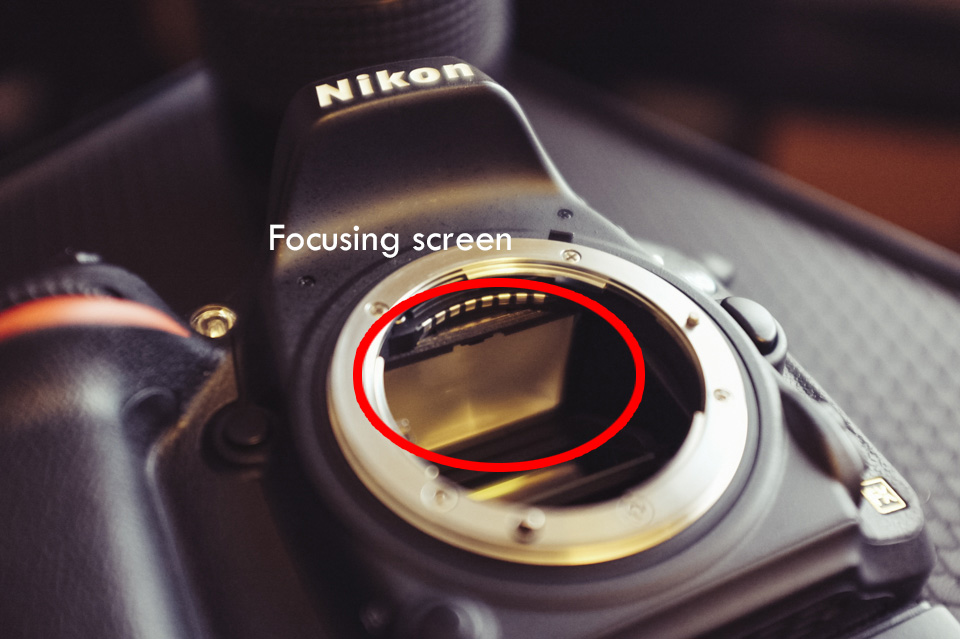
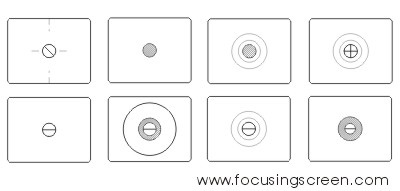
In modern DSLR cameras, the focusing screen is very simplistic and generally only has a simple outline of the autofocus node area.
The focusing screens in older SLR cameras had more of a job to do as they provided the only way to actually visually display focusing. The older screens were designed to essentially visually split the image you viewed through the viewfinder, the more ‘in-focus’ you made the scene the less ‘split’ the image appeared and the more ‘in-focus’ you made it the more aligned the two images became.

I mentioned in one of the above pictures that the focusing screen is actually very easy to access and change, and I have done so myself in the past without too much hassle. You simply remove the lens and pop out the old one and pop in a new one.
There are also a massive variety of focusing screens to choose from that alter the out-of-focus scene in different ways from vertical, horizontal, or even angled split screens. Focusingscreens.com is by far the best source of focusing screens I’ve found on the Web, so if you’re interested in seeing all the different types available to your specific camera model then definitely check them out.
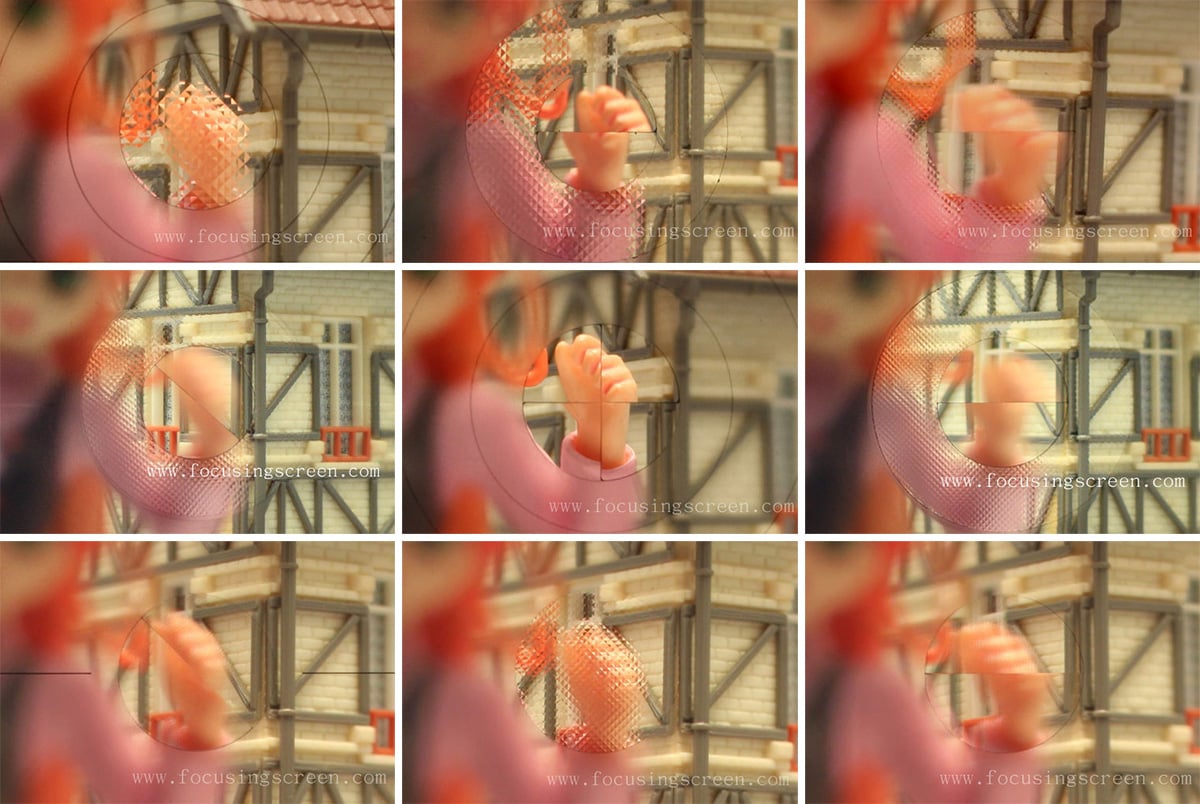
These focusing screens sound great right? You may be wondering why on Earth this simple yet igneous way of assisting in manual focusing isn’t in our modern DSLRs anymore; after all, this method of focusing practically guarantees pin-sharp results every time in my experience.
There are a few important reasons why these focusing-screens have fallen out of favor.
First and foremost is their compatibility issues with our modern autofocus. Essentially, these screens can conflict with the speed at which autofocus can determine a scene and focus on it accurately. Focusing screens reduce the amount of light that enters our eye whilst focusing. The screens display the out of focus areas visually to us by having heavily ground glass in there which diffuses and thereby reduces the amount of light that can enter the viewfinder, which in turn makes it a little harder for us to see through.
With very fast lenses (prime lenses that have an aperture of at least f/2.8, for example), this isn’t too much of an issue as there is already a ton of light entering the lens when we’re trying to focus—remember that our modern cameras only apply the chosen aperture value when we actually press the shutter. But with longer zoom lenses where the aperture only goes as wide as f4, for example, the drop off of light is significantly noticeable.
Some of these focus screens can limit as much as one whole stop of light from entering the camera.
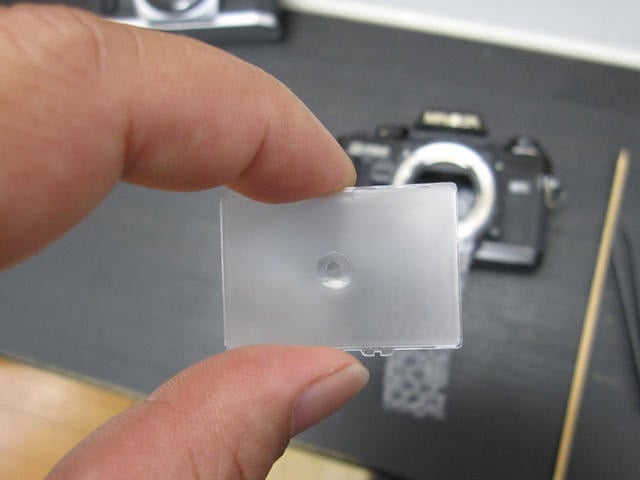
I know of several photographers who use a lot of very fast manual focus lenses and swear by how effective and efficient these focusing screens are. After all, it’s not the end of the world if you don’t get on with them as you can simply put your old focusing screen back in. The cost of these is around £70-£80 ($90-$100) so it’s pricey, but not so expensive so as to not be worth a look. I’m thinking of getting one for my back-up camera body to use with manual focus lenses.
PROS
- Very effective at consistently nailing pin-sharp manual focus images
- Can be replaced and altered without specialist tools or knowledge
CONS
- Can conflict with autofocus lenses making them sluggish
- Most of the focus screens will make the viewfinder darker and even effect ‘through the lens’ exposure readings
- A little pricey to test out
COST
£70-£80 ($90-$100)
2. Magnifying Viewfinder Eyepiece
This next item is the cheapest ‘quick-fix’ for sharper manual focus shots, but as is often the case, this is also probably the least effective in my opinion.
A magnifying eyepiece will replace the eyepiece you currently have for one that has a tiny magnifying lens built into it. You remove your current eyecup and slot this on instead and it will then magnify everything you subsequently see in your viewfinder.
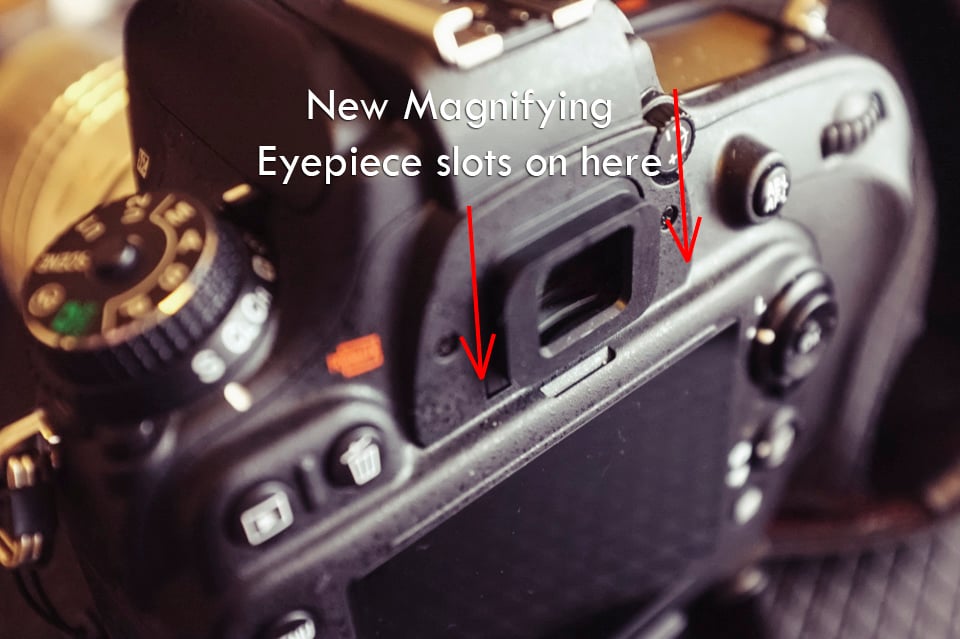
I picked one up a while ago as I thought this seemed like a really smart and effective way of fixing a temporary problem. I only use manual focus lenses some of the time so I thought I could pop on this magnifying eyepiece quickly and effectively only when I needed it.
In theory, it makes sense—and yes, it does magnify the image when you look through the viewfinder, making manual focusing a little easier—but unfortunately, I also found that it magnifies the image so much that I can’t quite see the edges of the frame in my shot making it tricky to compose an image effectively.

Different magnifying eyecups come with varying amounts of zoom and mine even came with the ability to zoom the image from 1.08 times to 1.6 times zoom. Even with the ability to dial the zoom right down if you wanted, it still meant that you had a tiny lens attached to the back of your camera which meant that your eye was further from the viewfinder, so even with the minimum zoom selected I still found it hard to see the entirety of the frame within my viewfinder.
I’ll just add here that I bought an inexpensive third-party magnifying eyecup. Although I’ve shared my experiences with this version I cannot say that the more expensive versions won’t be better as they may well be. If you have one and haven’t come across the problems I’ve outlined here then please get in touch as I’d love to hear your thoughts on it.

PROS
- Very inexpensive to try out
- Simple and easy to swap on and off with your existing eyepiece
CONS
- Additional depth on the eyepiece can make it tricky to view and compose your shots
- Having the larger eyepiece attached makes your camera prone to getting caught on everything, especially when carrying your camera on a neck strap
COST
£15-£30 ($20-$40)
3. Video Loupe
The last item on my list is something that is so simple yet so effective that I was dumbfounded as to how I’d overlooked it for so long.
The video loupe is a large viewfinder that covers the entirety of your LCD screen and displays an image in an eyecup that you hold up to your eye. Rather than composing and focusing your shot via the standard viewfinder, you now switch your camera to live-view and compose and focus your shot through this video loupe.
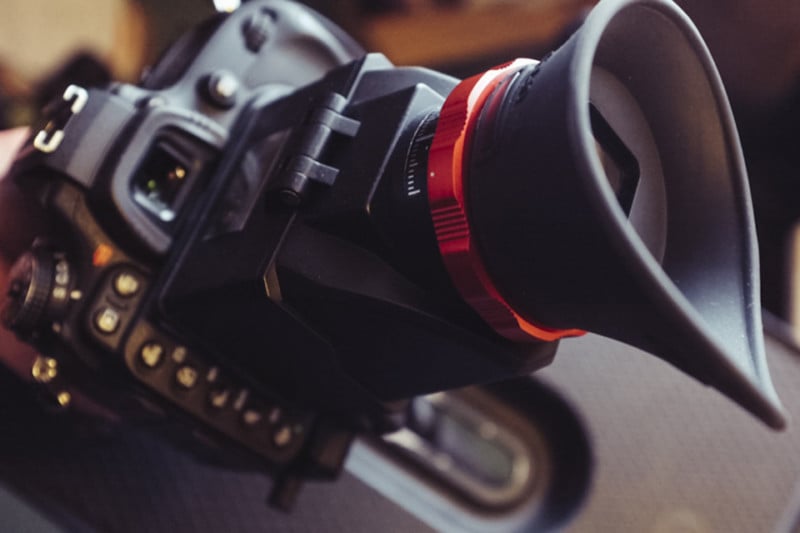
First off, this video loupe is only useful on cameras with a ‘live-view’ function, and thankfully that is a feature that is on most modern DSLR’s now. You attach this video loupe by screwing a little plate into the base of your camera via the tripod mount and then slot the video loupe viewfinder in when you want it. This is great as it is very quick and easy to remove when you’re not using it.
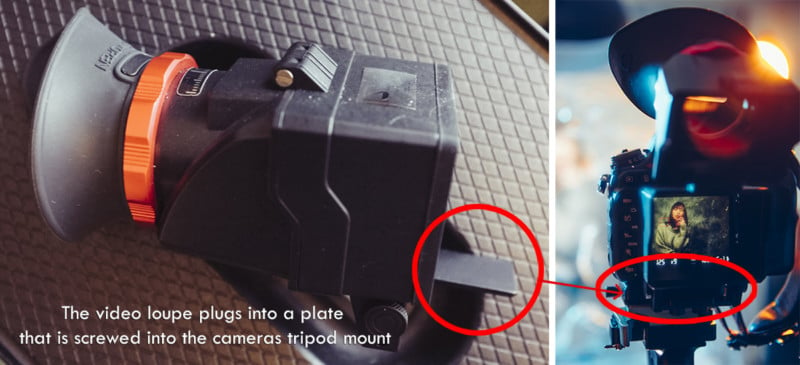
When you engage live-view on your DSLR, you are asking your camera to essentially send a live video feed of what is in the viewfinder to the screen at the back of the camera. Doing so results in a couple of key things happening that are very important to us.
Firstly, the cameras mirror has to flip up and out of the way for this live-view to work. That doesn’t sound like a big deal, but it does mean that when you actually take a shot, there is distinct delay between pressing the shutter, the mirror moving again and the shutter actually capturing the image. It is still quick, but certainly noticeable if you were trying to photograph something quickly.
In reality, it’s unlikely that you’d be trying to photograph something that was moving quickly with a manual focus lens, so this slow methodical shooting speed is often found when manual focusing anyway.
On top of that it does mean that you can’t fire off multiple shots very quickly because of this mirror delay, but again I doubt that if you’re shooting with manual focus lenses that you’re intending to shoot at 10 frames a second.
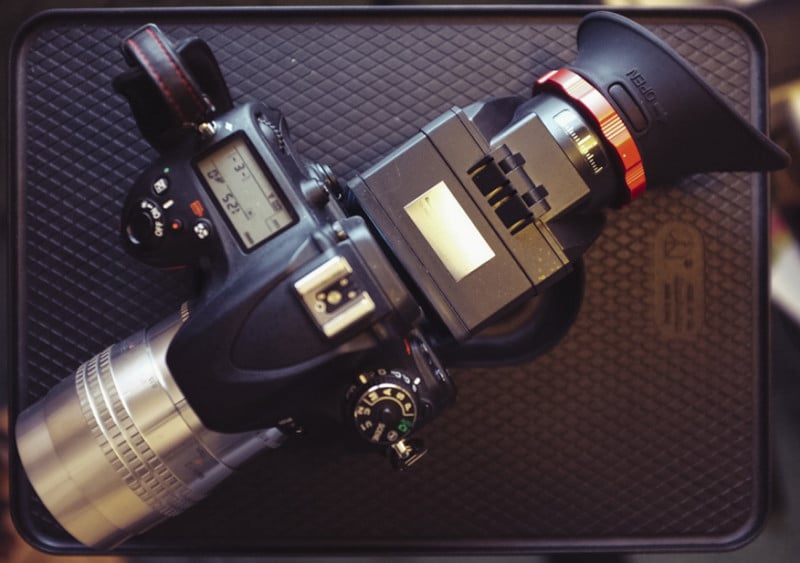
For me, the biggest feature of this video loupe solution to manual focusing is the fact that your image is now backlit. Remember that you are looking at the bright LCD screen to focus, and that automatically brightens the image considerably compared to the viewfinder in most studio situations. As a result, your task of seeing when and where the image is in-focus is now incredibly easy: the image is bright and you’re looking at a screen that is filling your vision entirely.
Even when I was using a 2-stop ND filter on my old manual focus lens in a dimly lit studio environment with tungsten modeling lamps, the live-view image being displayed was bright and easily focusable.

For me, having a video loupe for manual focusing is fantastic! One of the key reasons I love using it for manual focusing is simply because of the brightness that is offered from focusing on that big backlit screen—that feature alone easily outweighs the minor downsides for me.
Unfortunately, they aren’t cheap, and I think that is because it has the word ‘video’ in the name. Everything related to video is overpriced in my opinion, and this is no exception. That being said, there is a huge price range, starting out at the bottom end with the basic ones like mine for £70 all the way up to the higher quality ones for upwards of £200.
PROS
- A gorgeous big and brightly lit image for you to nail your manual focus shots
- Quick and easy to attach and detach on nearly any camera
CONS
- They are a little pricey
- Video loupes add a lot of weight and bulk to your system
- Running live-view constantly will slow down your shooting speed making photographing fast moving subjects tricky
- Having live-view constantly enabled will significantly reduce the battery life if you’re used to never using it
COST
£70 – £200 ($90-$250)
In Conclusion
I know that is an insanely long-winded way of explaining how to focus a lens, but I feel it should help when you realize it’s not just you that struggles with it. As I said at the top, manual focusing is a skill like any other, it takes practice to get good at it. Give yourself the best possible chance of nailing focus by using one or more of these tips and hacks.
Most importantly, stick with it. There are literally thousands of crazy cheap manual focus lenses out there that produce something visually unique and engaging, and they’re well-worth all the extra effort and a few minor expenses in my opinion.
About the author: Jake Hicks is an editorial and fashion photographer based in Reading, UK. He specializes in keeping the skill in the camera and not just on the screen. You can find more of his work and writing on his website, Facebook, 500px, Instagram, Twitter, and Flickr. This article was published in two parts here and here.